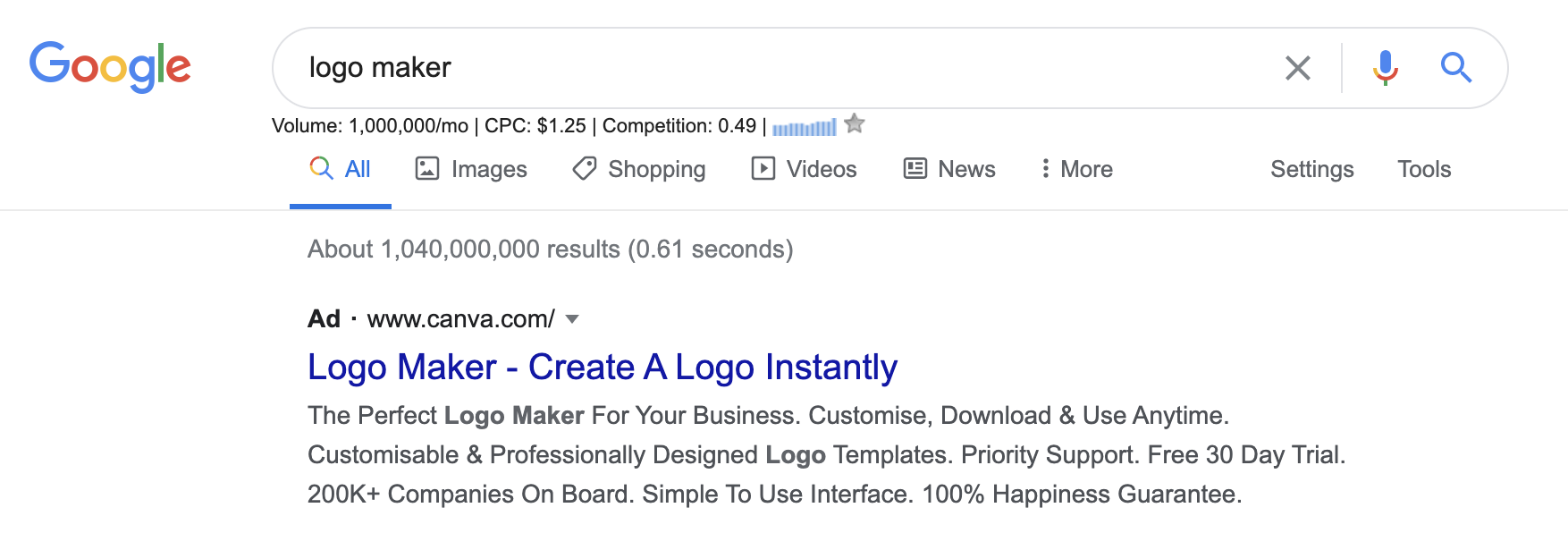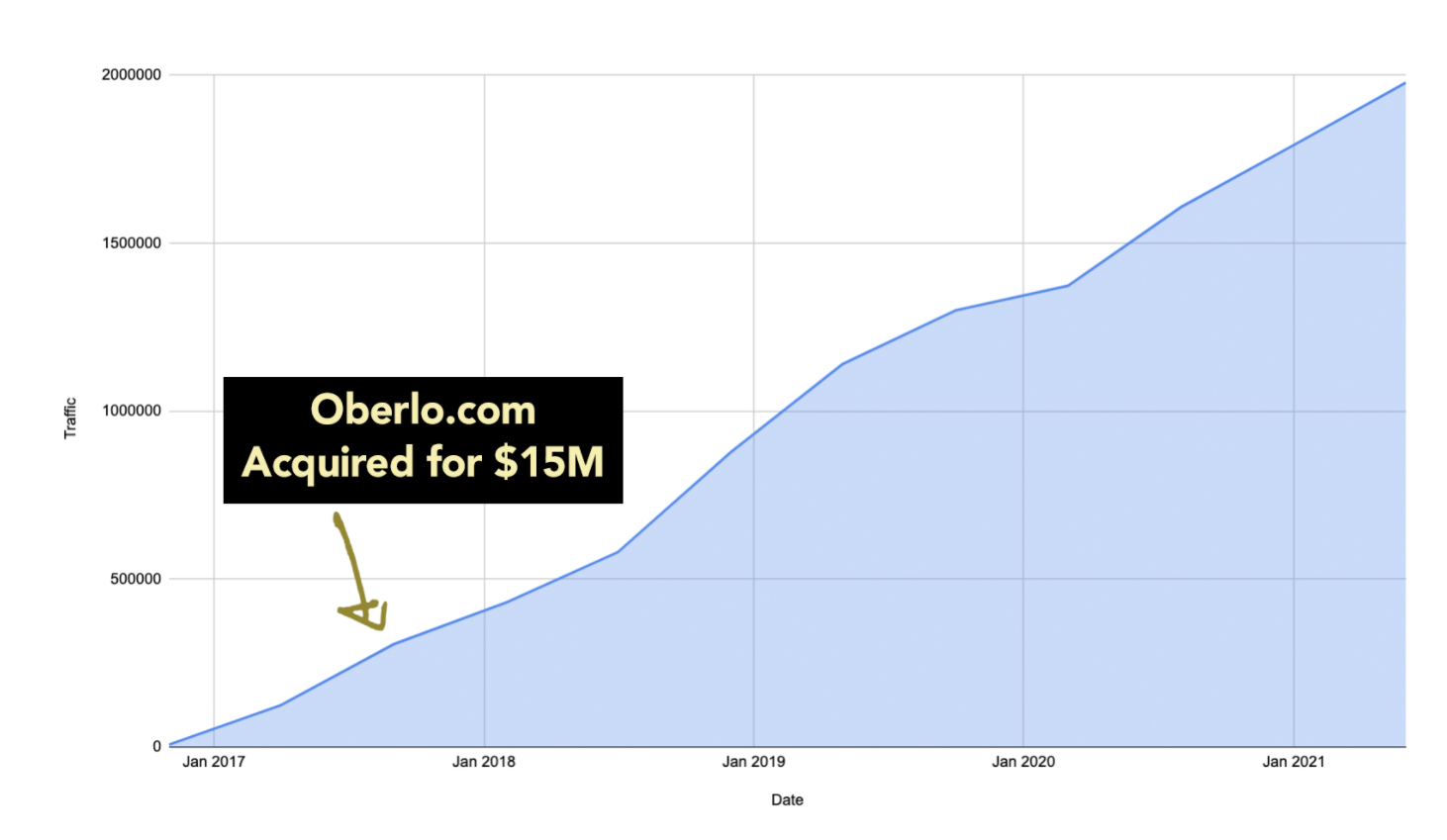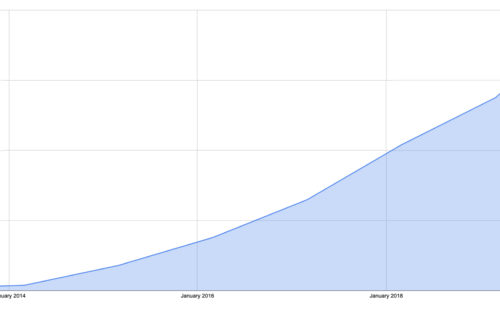When you’re building a company, you need to start from the ground up. You need to have a business model. You need to have the right team. You need to have the right financing. You need to have the right growth engine. But more importantly…
You need to have a foundation to build upon for decades to come.
“It is not the beauty of a building you should look at; it is the construction of the foundation that will stand the test of time.” – David Allan Coe
The company Shopify is a brand that I admire for their commitment to thinking long term in their bets and in their ability to roll out marketing efforts that support the greater business engine. It’s their commitment to long term investments that today has the company valued at over $150 billion (yes, billion) dollars in market cap…
There’s a lot of elements of their growth engine worth studying:
- Their marketplace for apps
- Their business acquisition strategy
- Their investment in user experience
- Their strategic podcasting investments
- Their freemium / pause store experience
- Their ongoing educational content efforts
- And so much more….
But today, I want to talk about a relatively small part of their growth engine but one that contributes to 2 million organic visits a year and 188,000 inbound links. Free products. Free tools. Free generators. Interactive content experiences that help their target audience accomplish a specific goal. An investment in free tools like a Privacy Policy Generator and Logo Maker has helped Shopify have a presence in the search engine results page for over 70,000 different keywords and phrases.
It’s helped them create what we call an SEO & brand moat.
SERP dominance is when a brand has invested so strategically into content & SEO that they have captured a placement in search results for the vast majority of search terms associated with their market and ideal customers.
Today, there are 70,000 words or phrases you can type into Google and be met with a link driving you to a free tool created by Shopify. This happens more than 2 million times per year and will continue to rise in the coming months as Shopify continues to invest in this strategy. Today, I want to talk about this strategy. I want to talk about why it works so well for Shopify and how you can leverage it to build a competitive edge.
The Arbitrage Opportunity of Launching Free Products
People want tools.
People want graders.
People want products.
People want templates.
People want calculators.
People want generators.
Don’t believe me? Consider this…
There are 5 million searches for “mortgage calculator” per month.
There are 135k searches for “business plan template” per month.
There are 35k searches for “privacy policy generators” per month.
That’s a lot of people. And there are millions of other examples of people going to google looking for tools, products, graders and calculators to help them solve problems. In some cases, entire business models have been built on the back of these tools. You can reach out and hire a local lawyer right now to write a privacy policy on your behalf for anywhere from $500 to $2,500.
Or… You can use the free privacy policy generator created by Shopify.
This is arbitrage in action. In economics, arbitrage is the practice of taking advantage of a price difference between two or more markets. Shopify is able to deliver value through a free tool that would cost you hundreds or thousands of dollars to achieve in the standard market.
The reward?
The Privacy Policy page boasts more than 75,000 organic visits a year for Shopify. The tool has been linked to more than 1,700 times and currently ranks for more than 445 keywords.
This isn’t even the best tool that Shopify has in their content portfolio. Here’s a snapshot of some of the various tools that Shopify has launched over the years and some key metrics:

The free Logo Maker (Hatchful) generates nearly 500,000 visits a month for Shopify. Entire business models operate on the back of the concept of creating logos in the cloud. You could pay someone on 99Designs, you could use a tool like Canva or you could download Photoshop and try to bring one to life all on your own.
But Shopify leverages arbitrage to capture the market.
While brands like Canva are spending more than a dollar per click to capture people looking to make a logo (and eventually pay for their logo maker product):

The team at Shopify is able to capture a significant amount of traffic just by developing a lightweight logo maker and offering it to their target market for free. The benefits of creating a tool that services your target market is above and beyond the traffic.
Free tools also:
Generate leads through these experiences
Generate backlinks boosting their site authority
Build stronger relationships with their market
Capture emails to help them stay top of mine
Strengthen their SEO moat by ranking for new keywords
Weaken competitors through arbitrage
This is why they can be so powerful.
But how does a brand go about creating one? Let’s dive in…
How Much Does It Cost To Create A Free Tool?
I don’t have an MBA but I’m going to give you an MBA-esque answer:
It depends.
It depends on the tool. It depends on the technology. It depends on the approach.
If you’re equipped with a lot of time… It’s very feasible for you to pull up your sleeves, dive into Coursera, enroll in Lambda Academy or watch 40-50 videos on YouTube all with the goal to learn how to code and design your very own calculator. But if you’re like most people…
That’s not feasible.
In those cases, the best option is to work with a team (either in-house or outsourced) that can bring this asset to life. The price is also going to vary depending on the complexity of the output the user gets after using your tool. The time to develop a mortgage calculator that can serve multiple markets around the world is going to be a lot more than a tool that counts the number of words in your blog post.
This is why it’s difficult to give an estimate without knowing the specifics of what you’re trying to accomplish and the experience in full.
From experience; you want to have at least 3 people at the table when it comes to planning, designing and building an interactive tool. You want to have a content strategist who will ensure that the asset is optimized for search and is positioned in the right way. You want a UX designer to ensure that the tool is both easy and efficient to use. You want to hire a developer who can bring the vision to life. And you want a project owner who can manage the entire process (this can be one of the three people already mentioned).
The cost to develop a simple tool could be $4,500 or $7,500 depending on the scope and complexity. The cost to develop an interactive tool that has all the bells and whistles could cost $35,000 to $250,000 depending on the scope and complexity.
It’s always best to start with a plan that outlines exactly what you want the tool to do and use that to determine time estimates & costs. In fact, the other option that exists for brands is to not create their free tool from scratch at all. Instead, the opportunity exists to simply purchase and acquire tools that exist today and transfer their value into your own.
Why Acquiring Products Can Pay Massive Returns
In 2017, Shopify acquired Oberlo.com for $15M. At the time, the Oberlo service let you import products directly from AliExpress into a Shopify store providing a flawless drop shipping experience. At the time, Oberlo merchants had sold over 85 million products around the world sourced through their platform.
At a price tag of $15M you might be surprised by my next statement:
This price point was a STEAL.
I don’t say this to suggest that the founders of Oberlo should have asked for more. I don’t say this to suggest that they got ripped off… I say this to acknowledge the move as being another example of Shopify making a brilliant bet on content and unlocking growth through a tool that ultimately leads back into their overarching growth engine.
Here’s a look at the MONTHLY traffic to Oberlo since 2017 and projected growth:

Our data predicts that Oberlo will generate over 2 million visits a month by March 2021. That’s 24 million organic visitors a year and doesn’t include the traffic that comes from paid media, website referrals or social media.
But here’s where it gets even more interesting:
The total value of the organic traffic they capture is worth $21 million. Meaning; for Shopify to acquire this traffic using PPC instead of organically ranking for these phrases it would cost them $21 million to get the same volume. That’s one area in which the ROI of their acquisition of Oberlo becomes even more obvious. For $15M, Shopify has used the Oberlo service as a traffic generator, a lead magnet and a revenue generator due to the fact that there’s both free, paid and premium subscription options to use the product.
The other tools that we’ve talked about like the Privacy Policy Generator, Profit Margin Calculator and Slogan Maker are all a part of Shopify’s growth engine. But the acquisition of Oberlo achieves the same goals as these free tools but the paid model & product synergies associated with make Oberlo even more special. It’s attracted as a product more than 480,000 backlinks, ranks for 825,000 keywords and is on track to generate 21 million annual visits a year by 2021.
There’s a lot to unpack here… But there’s no question:
Acquiring and building tools can both pay significant returns. I’ll dive deeper into the role of site acquisitions as a content marketing play in the future.
But the takeaway I want to leave you with is this:
Sometimes the best way to build your house of tools is from the ground up. You create the blueprint. You create the designs. You create the plans. You build the house…
Innovation can happen here.
But sometimes you can unlock a shortcut to ridiculous returns simply by acquiring a house that already had renovations done and is already acting as a great place for your customers and target market to live.
This isn’t to suggest that one approach is better than the other. But to understand that interactive tools (both free and paid) offered by brands can be a great way to strengthen your moat, unlock industry arbitrage and establish a long term advantage.








